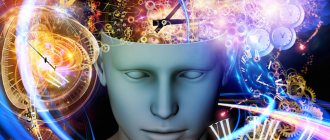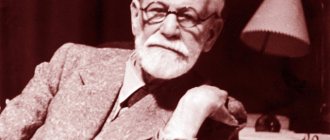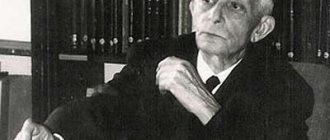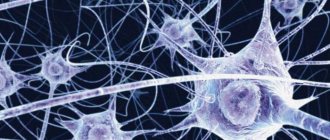Transpersonal psychology reveals what is hidden deep in the subconscious. It brings to the surface such details of your life that you have long forgotten, or perhaps did not even know. What is it for? To change your life for the better, get rid of unconscious factors that influence your behavior and thinking. And also to clear your consciousness of the negativity that has been stored there for many years.
What is transpersonal psychology
Transpersonal psychology is a science that studies altered states of human consciousness and psyche. Its basis is considered to be the research of Carl Jung and Abraham Maslow. According to scientists, there is something unconscious inside every person. And it affects the formation of personality, behavior, relationships with other people. At the peak of experience, this unconscious is revealed, which helps to cope with many internal problems.
In addition to Maslow, representatives of transpersonal psychology were E. Sutich, S. Grof, J. Fadiman, M. Wich, S. Margulis. Each of them complemented science, opened a new direction in it and conducted experiments.
Scientists created the Association of Transpersonal Psychology and published a journal dedicated to it. A few years later, the Institute of Transpersonal Psychology was created in California. Its founder was Robert Fager. Despite this, this movement did not gain recognition in scientific circles for a long time. Many even considered it absurd.
This changed in 1996 when the British Psychological Society opened a department of transpersonal psychology. This contributed to the growth of its popularity among scientists. Books have also been written on transpersonal psychology. The most famous of them are “Beyond the Brain. Birth, death and transcendence in psychotherapy" (S. Grof) and "Cosmic game. Exploring the Frontiers of Human Consciousness” by the same author.
This direction studies several areas at once:
- altered consciousness;
- parapsychology;
- spiritual and religious practices;
- the influence of psychedelic drugs on human consciousness and psyche;
- breathing techniques;
- yoga, meditation techniques;
- the world of experiences associated with death.
Another area of transpersonal psychology is the spiritual development of a person.
Breathe out psychological trauma
The most famous figure in transpersonal psychology is the Czech-American psychologist Stanislav Grof. In his opinion, human mental disorders are personal and spiritual crises, not diseases. And to get out of them, you need to expand your consciousness. Which, in turn, will help open the unconscious, discover suppressed experiences, relive them and thereby get rid of them.
Before the tightening of policies regarding psychotropic substances, such a “flight” beyond the boundaries of space and time was carried out with the help of LSD. After it was banned in the United States, Grof and his wife began using the method they developed, holotropic breathwork, as an alternative.
This method is based on a combination of rhythmic music (new age and ethno) and rapid breathing and is implemented only in the presence of a sitter, a mentor who helps a person enter and exit the necessary state.
During practice, a person experiences hyperventilation of the lungs, he falls into a pre-fainting state - euphoria occurs, ringing in the ears, flies fly before the eyes, convulsions appear, which supporters of the method call “clamps”, which are of a psychological nature. Grof’s followers believe that in this way psychotraumatic moments of life “come to the surface”, which are the cause of disharmony.
“In holotropic states, we are able to experience in vivid detail all stages of our biological birth, memories of prenatal life, and even information about conception recorded at the cellular level. Transpersonal experiences can lead us to episodes from the lives of near and distant ancestors, into the realm of the racial and collective unconscious, and also provide access to episodes that relate to memories of past incarnations...” writes Grof.
In addition to holotropic breathing, rebirthing (“rebirth”) is used, a conscious breathing technique invented by Leonard Orr. He advises everyone to practice it, without exception, because he believes that rebirthing will help overcome the birth trauma that everyone has. Transpersonalists' tools also include body-oriented practices (yoga, qigong), dream analysis, meditation, hypnosis, mandala drawing, sleep deprivation, limiting water consumption, prolonged immobilization, excessive physical activity and the use of surfactants. Many of these methods are borrowed from various religious movements, occultism and mysticism, which is why transpersonal psychology is sometimes called the new shamanism.
Key Ideas
In short, transpersonal psychology is based on the idea that there is an unconscious part of the human psyche. It influences lifestyle, thinking, views, principles, priorities. Determines a person’s behavior throughout his life.
The unconscious layer consists of feelings, experiences, emotions that have been repressed from consciousness for various reasons. This also includes memories.
Transpersonal psychology studies all aspects of personality. But its main task is to study consciousness, which under special circumstances can go beyond the usual boundaries. This happens when a person plunges into one of the altered states.
You can get inside yourself in different ways. For this purpose, various methods and techniques have been developed. In a transpersonal state, a person gets the opportunity to feel unity with the Universe, relive the events that trouble him, get rid of negative emotions, and solve psychological problems.
The meaning and ultimate task of teaching integral psychology is not the retelling of stories about integral knowledge and not even the transfer of its life-giving drops, but the discovery of its source in every student.
Transpersonal psychology is a direction that focuses attention on the deep areas of the psyche, the processes of personality development and the dynamics of consciousness, philosophically rethinking and scientifically substantiating the ideas, experience and psychotechnologies of world spiritual traditions. The object of research and practical paradigms and projects of transpersonal psychology is a creative, self-improving person striving for the full and adequate realization of his capabilities.
Transpersonal psychology began to develop intensively in the 70s, first within the framework of the humanistic approach, and then became an independent direction of psychological science and practice.
By the time of the emergence of humanistic and transpersonal trends in psychology and psychotherapy, various approaches, research and practical methods, techniques, and tools were effectively used and intensively developed. However, the object of study and influence of these methods and tools increasingly became not the personality as such, but one or another (often quantified) model of the Ego based on the field of consciousness. Basically, the work of researchers and practitioners was aimed at an isolated - in their ideas, but not at all in real life - construct or process of the psyche.
The basic, a priori (initially, even before the birth of a person, present in his psyche) collective patterns of the unconscious were taken beyond the scope of this work. The deep meanings of the social context, which determine such important components of the realization of personal potential as charisma, relevance, and success, also remained unattended. For the average person in Western civilization - including a psychologist - the revelation was shocking that something perceived by him as his Self is not only “not the whole psyche” (Jung) - but also “by no means the Self”; that his mental activity is dominated by the unconscious, which regulates the direction and intensity of the flows of psycho-emotional energy, intense and extreme experiences, creative processes, and affects.
The basic internal conflict - the gap between consciousness and the unconscious - has become a widespread (if not total) phenomenon. Its consequences: on the one hand, neuroses, depression, existential frustrations, personality-destructive surrogates for the integration of superficial and deep layers of existence (alcoholism, drug addiction, participation in pseudo-religious communities), on the other hand, spontaneously arising and pathologized experiences of mystical and quasi-spiritual experience.
The prevalence of the basal conflict and the need to counteract its consequences led to the fact that scientists and specialists in psychology, philosophy, sociology and medicine were assigned tasks - or rather, scientists and specialists were presented with the mentioned tasks - not only the development, but also the correct formulation of which provided for a shift in attention to regions of the psyche inaccessible to consciousness or closed from it.
The object of depth psychology (psychoanalysis, analytical psychology, humanistic and transpersonal schools) is no longer the personality - a set of socially significant mental properties, relationships and actions - but the individual - “a separate, indivisible unity, a certain integrity, including - of necessity - as an invisible area of the unconscious , so is consciousness” (Jung). Psychologists are coming to understand that even the deep, unconscious causes of individual symptoms, problems, traumatic experiences only indicate a failure in the mental system, indicate a violation of the integrity of the individual, and that only a holistic (holistic, integral) approach opens up successful ways to achieve mental health. The search for these paths is an article of faith inscribed on the banner of transpersonal psychology.
The concepts of “goal” τελός and “whole” τελειός are etymologically related. Achieving a goal simultaneously means the completion of an action, an ascent to completeness, perfection, and beauty. The goal is achieved when a perfect, symmetrical, beautiful whole is built. According to the ideas of analytical, humanistic and transpersonal psychology, personality is a form of manifestation, an integral autonomous part of world unity.
Conflict tensions between fragments and levels of personality organization, between a person and his existential context, the environment of life - indicate that this individual is not integrated (not collected, not purposeful, not harmonious), that his intentions and strategies are not integral (not correlated with structures and processes of the world as a whole). The theoretical searches and practical efforts of integral psychology are aimed at eliminating these tensions, restoring the integrity of the individual and integrating it into world unity.
Integral (integrative) psychology is a generalization in a broad conceptual and methodological context, the natural development of transpersonal approaches, principles, ideas, developments.
The difference in the names of the integral - integrative direction is not even due to the perception and display of different angles of a single contemplated, but to the difference in the manners and intentions of contemplation, and the professional preferences of the namer. Integral – having unity, recognizing integrity as the fundamental principle of activity. Integrative – synthesizing, leading to integrity.
The ideological eye of integral psychology is the principle of unity, according to which both the psyche and the physical world, and their totality - complex, open, multi-level, self-organizing systems - parts that make sense only in their relation to the whole.
Any integral psychotechnics, which is based on the principle of unity, is, or in the course of its development and improvement, necessarily becomes integrative. On the other hand, the effectiveness of an integrative method or approach is determined by its integrity.
Integral (integrative) psychology is a system based on the principle of unity of theories, concepts, models, methods, skills and abilities that lead a person to integrity - unity with the world and himself, less conflict, fragmentation of consciousness, experiences, behavior, and, as a result, , to a harmonious, fulfilling life and successful self-realization.
Psychotherapeutic workshop Transpersonal approach in the practice of psychological counseling and psychocorrection>>
Understanding the structure, aspects, patterns, properties and processes of this integrity, ways and means of its restoration (individuation), the ability to successfully act in its context is the conceptual core and a necessary condition for the work of an integral psychologist, regardless of what area of theory or practice he is in specializes.
In fact, integral psychology is the methodological basis for constructing and applying technologies for working with people (consulting, training, group discussions, breathing, art therapy, body-oriented techniques).
Practical methods of integral psychology and integral personality development programs include a wide range of techniques that are diverse in principles and approaches, but complementary in nature,
— the focus of which is the personality as such, and not its individual properties, processes, problems;
— carrying out a complex and comprehensive impact on a person (body, consciousness, unconscious psyche);
— using unmanifested personal resource potential;
- aimed not so much at achieving the integrity of the individual, but also at the reorganization, integration of his existential context, his full and adequate self-realization as an individual in society.
Applying these methods and techniques, a specialist in integral psychology does not lose sight of the fact that any theory, concept, therapeutic myth, direction, form of psychocorrection, teaching, idea, everyday judgment - despite their often seeming completeness and universality, are only partly fair, that The scenario of each integrative process is unique. Integral psychotechniques cannot be formalized or replicated. The use of integral psychology methods is, first of all, their creative development - and often inspired improvisation - for each specific case.
Integrative psychology and its basis - a holistic worldview - is not a set of information and skills, not a set of rules, but a philosophical and psychological intention that has practical application, a style of professional thinking, a special kind of knowledge, a way of life.
Obtaining this integral knowledge, moving to a new worldview, and changing lifestyle is possible in a process consisting of three necessary components:
— experience of integrity (its experience, comprehension and integration);
— restoration of intrapersonal unity (individuation, self-knowledge);
— practice of integrative activities in society.
As they say, “the tongue does not dare” to call this process “additional education” or “professional training” - but, nevertheless, the profession of an integrative psychologist can only be spoken of as the result of this process.
The requirements for educational programs in integrative psychology that implement this process cannot but be high. These programs should be “new generation” programs or a new level of professional training not only for psychologists and psychotherapists, but also for specialists in any other professions that involve working with people.
The cornerstone of these programs (as opposed to the dichotomy of special and systemic education) is a productive synthesis of a focus on training practitioners - and a multimodal, comprehensive, systemic, holistic approach. These programs must also combine a high professional level of presentation and ease of mastery of the material.
Another important requirement is the ascent from everyday life to higher, existential values and deep meanings, the search for and understanding of the place of these values and meanings in the existential context.
Integral education programs develop creativity, prepare and customize the main (perhaps the only) tool - the personality - of a specialist in integrative psychology, who must be, firstly, holistic, and secondly, capable of not only setting and solving venture, innovative problems, but also to cope with the everyday in accordance with the paradigms of creative development and application of integral psychotechniques.
Without preparing this tool, mastering any skills, methods and techniques of the transpersonal and, especially, integral arsenal will, at best, be useless. Here it is quite appropriate to recall Paul Feerabend’s reasoning about “anti-methodology” as the basis of progress or to cite the remarkable statement of Abraham Maslow: “if psychology is reduced to a set of rules and techniques, then what will be its difference from playing chess or dental treatment.”
In educational programs in integral psychology, even the development of a theoretical basis is provided not in the form of communication and memorization of the necessary information, but in the form of training, independent creative work with the material of the programs.
A specialist who has received professional training in the direction of “Integrative Psychology” is able, immediately after graduation, not only to take on complex tasks of psychological practice, but also to offer a higher, even compared to the systemic – integral – level of their solution. Such a specialist, regardless of profession and type of activity (consulting, psychocorrection, work with personnel, PR, management) becomes exclusive, in demand, and highly paid.
In the Book “Vedanta - the Religion of the Future,” Vivekananda tells a parable about a Teacher who invites a student who is keen on reading sacred literature to squeeze out a book about rains and thus receive the moisture of raindrops. The meaning and ultimate task of teaching integral psychology is not the retelling of stories about integral knowledge and not even the transfer of its life-giving drops, but the discovery of its source in every student.
Author: Brevde Gennady Mikhailovich>>
Psychotherapeutic workshop Transpersonal approach in the practice of psychological counseling and psychocorrection>>
Transpersonal Art Therapy and mental integrity of the individual (Brevde G.M.)
The difference between transpersonal psychology and other sciences
Most areas of psychology require facts, arguments and evidence. And they must be reliable. The transpersonal branch is based exclusively on unconscious manifestations of personality. There are 5 main principles of transpersonal psychology:
- Consciousness is limitless, like space.
- Personality can be viewed from different angles, in different contexts.
- Human consciousness is combined with the mind of the Universe.
- A person's personality is determined by his soul and mind. And they, in turn, form a single whole.
- Science combines knowledge even from seemingly completely dissimilar sciences.
Psychologists working in the transpersonal direction have still not been able to scientifically confirm the reliability of their research. But one thing is for sure: science is capable of combining psychophysics and psychophysiology.
Altered Consciousness
Transpersonal research studies states of altered consciousness when it goes beyond the usual “I”. The bulk of transpersonal psychology materials are taken from dream interpretation, meditation experience and paranormal phenomena.
Representatives of this movement admit the existence of higher powers, but avoid attachment to any particular religion. Transpersonal psychology strives for freedom, love and universal brotherhood. The main task of this direction is to overcome personal isolation, self-sufficiency and centering. What did its representatives say about this science?
Methods of transpersonal psychology
Conventionally, the techniques of transpersonal psychology can be divided into 2 groups: general and for analyzing changes in consciousness. The first group includes:
- breathing practices;
- psychophysiological experiments;
- use of psychedelic drugs;
- psychodiagnostics;
- effects on touch and other senses;
- Imagination games, visualization.
In order to initiate changes in consciousness, several techniques are used:
- Concentrating attention first on one thing and then on another. The switch happens abruptly.
- Limiting fluid intake during intense physical activity.
- Excessive activity, such as running without stopping for a long period of time.
- Alternating interaction of low and high temperatures.
- Impact of music.
- Staying alone.
- Being in an immobilized state.
- Insomnia.
- Holotropic breathing.
Transpersonal psychology techniques such as rebirthing and theta healing are also considered quite popular.
William James
In the Gifford lectures, which were called “The Varieties of Religious Experience,” W. James emphasized the need to use empirical methods to understand spiritual experiences. Scientists make a mistake when they begin to divide reality into an object of observation and a subject, because everything depends on the external observer. How a person interprets the reality he sees should be the subject of research. As a result, it will be possible to explore what level of consciousness an individual has and how much spiritual transformation he needs.
Transpersonal psychology of Grof
Stanislav Grof devoted several years to studying that unconscious part of the human psyche that manifests itself with altered consciousness. During his work, he used psychedelic drugs. However, their use was soon banned. The scientist had to start developing a new way to penetrate the inner world of a person. It turned out to be holotropic breathing. This technique helps to cope with a number of obstacles that arise on the path to changing consciousness. There are 4 of them:
- At the moment when the unconscious layer of the psyche is opened, all senses are activated.
- Memories surface, for example, psychological traumas that the brain chose to “forget” about.
- Experiences appear that are in one way or another connected with death and birth.
- The transpersonal part of the human psyche appears. There is an expansion of consciousness, it goes beyond the limits of time and space.
According to Grof, deep in the subconscious of every person there are unresolved problems that affect his life. You can solve them if you relive those events again, experience those feelings and emotions again. This is the main goal of holotropic breathwork.
How to use the technique? You need to take several frequent deep breaths. This will help change consciousness. Energy will be formed inside, which a person needs to follow. At the same time, it is important to give in to everything that happens around you. Make sounds, take unexpected positions, feel something. It's not crazy. In this way, everything that has interfered with life for years is removed from the subconscious. As a result, the person will relax and calm down.
Fusion therapy
On the other hand, many of the techniques used in transpersonal therapy, such as meditation and psychedelic drugs, are being studied in laboratories around the world. And eminent neuroscientist and specialist in post-traumatic stress disorder Bessel van der Kolk considers dancing, MDMA, conscious breathing, yoga, rhythmic drumming and martial arts as techniques for overcoming psychological trauma. The researcher explains why unconventional methods can be used in the treatment of PTSD:
“The rational executive brain is great at helping us understand where our feelings come from. At the same time, he is not able to eliminate emotions, sensations and thoughts. Understanding why a person feels a certain way does not change how they feel.”
Psychotherapist Amina Nazaralieva says that “serious people in clinical practice do not use holotropic breathing,” but the hyperventilation technique is used in CBT.
When working with a client suffering from panic disorder, a specialist uses, for example, exposure, during which he needs to breathe frequently and deeply. This artificially causes panic and shows that it is impossible to die or go crazy from it, which is what people often fear during panic attacks.
“These effects are very similar to what I experienced when I practiced holotropic breathwork. Only then, during my youth, this practice was sold as a means of healing from all diseases, a way to achieve incredible spiritual growth. But there is no evidence of this in the scientific literature,” says Nazaralieva.
Rebirthing technique
Developed by American scientist Leonardo Orro more than 40 years ago. This is a breathing technique that allows a person to be born again, getting rid of negative emotions in the subconscious.
According to Orro, traumatic events happen to people from birth. In fact, birth itself can be included in this list. All this greatly affects physical and mental health. Consciousness protects a person from these memories, hiding them in the “storage” of the unconscious. But still he suffers from fears, complexes, and worries associated with these injuries.
Rebirthing helps to cope with the above problems. Being reborn, a person experiences the worst moments of his life over and over again. He transforms all negative emotions into positive energy, while experiencing unprecedented harmony. In many ways, the rebirthing technique is similar to holotropic breathing. It looks something like this:
- A person breathes through his nose or mouth. You can inhale however you like. Exhale as usual.
- As soon as your breathing calms down, you need to relax. The best position for this is lying on your back. You can't cross your legs. Consciousness must be freed from any thoughts.
- Focus on the sensations in your body. Did you feel a slight tingling or pain? This makes itself felt by one of the negative memories hidden in the subconscious. Try to remember and feel it.
- Turn bad into good. How to do it? Think about negative memories with humor. The alternative is to experience the pleasure of the negativity finally leaving the body.
For rebirthing to produce results, it must be taken seriously. You also cannot ignore the sensations that arise in your body.
Important questions
What does advanced training provide?
Advanced training makes it possible to gain new knowledge, skills and abilities within the framework of your professional activity in a short time.
Upon completion of the advanced training program, you receive a certificate confirming the improvement and (or) acquisition of a new competence necessary for professional activity, and (or) an increase in professional level within the framework of your existing qualifications.
What equipment is needed for distance learning?
Computer with Internet access. A webcam is desirable.
What document will I receive upon completion of training?
Upon completion of the professional retraining program (over 250 hours), you will receive a diploma of professional retraining. After completing the advanced training program (from 16 hours), you will receive a certificate of advanced training.
Theta healing technique
This technique of transpersonal psychology was invented by Vianna Stibal during the period when she was struggling with cancer. It helps to achieve inner harmony and satisfaction with life. According to Stibal's theory, you can get into the theta state in 2 ways.
Method one
The action plan is:
- Sit on a chair, place your feet on the floor, keep your back straight.
- Close your eyes. Take deep breaths several times. Take short breaks between breaths.
- Relax. Mentally move to the heart area. Form a clot of energy there.
- Take energy from your heart and throw it into the center of the Earth. Then collect it again into a clot (in the form of a ball). Lift up above yourself, the room you are in, your city, country, etc. Go into space.
All you have to do is float through space until you see a pearly white glow. This is your main goal. Be careful while flying and avoid blue areas.
Method two
Sit on a chair, take a comfortable position, relax. Closing your eyes, take deep breaths and exhales. As in the previous case, focus on the energy located in the heart area. Next you need to proceed like this:
- Imagine that you and the chair are one. Your molecules and stool particles become intertwined. But at the same time, everything retains its shape and outline.
- Now imagine that you are merging at the molecular level with the objects in the room. And then with the room itself.
- The next stage is merging with home, city, nature, planet, etc. Don't limit your consciousness. Mentally go out into space.
The last stage is unity with white light and some cosmic jelly-like substance. As a result, you will be able to connect with the Universe, thus entering the theta state.
This is not a panacea
I had three sessions with Matrenitsky, during which I tried all the techniques that he owned. Each time he helped me formulate a request that I wanted to work with in a trance state. Then he asked me to focus on bodily sensations: focus on how my heart beats, how my body becomes heavier as it relaxes. Then, following his instructions, I imagined what my anxiety looked like. She was a red ball, a rock, and a cloud of dust. I think these pictures depended on my general mood. For the remaining time, the doctor was silent, only occasionally asking questions like “What do you see now?”, “What do you want to do?” And I described to him everything that my imagination drew.
There are meditations during which you need to imagine how a flower or tree is growing inside you. In a trance meditation I practiced with a therapist, I did the same thing, but without the intention of seeing a specific picture. I gave free rein to my imagination and sometimes “watched” a film about my childhood, sometimes about the present, and sometimes I saw myself flying in space and hitting planets with anger. But I always managed the visuals myself. Apparently, this is what helped me relieve anxiety - in imaginary worlds I could do anything if I was as relaxed and concentrated as possible.
The anxiety disappeared within a month. And I was delighted! Imagine if you lived your whole life with your eyes closed, and then they were opened to you - and you saw cherry blossoms for the first time. That's pretty much how I felt.
Another patient of Matrenitsky, Olga, also stopped worrying. During the sessions she could not relax for a long time - her habit of controlling herself and everything around her was so strong. Therefore, at home she additionally learned to meditate. As a result, the most important experience that Olga gained during therapy with the doctor was letting go of control.
“Before, I couldn’t sit quietly and watch a movie: I needed to do something “useful” at the same time. I overprotected my loved ones and fell into hysterics if my son or mother did not answer me when I called. And after therapy, I seemed to exhale, relaxed for the first time in my life. My relationship with my family has improved, I started working with pleasure and learned to relax,” Olga describes her new state.
For six months there was no anxiety in my life at all. But then the anxiety returned, although its intensity decreased significantly. If before she looked like an annoying fly, now she looks like a tired one.
And the skills I acquired in countless sessions of cognitive behavioral therapy helped me cope with it.
Olga is also sure that transpersonal therapy alone is not enough: “Yes, I dug up a bunch of deep-seated problems and gained a different life experience. But my behavior hasn't changed. In order to master these “fossils” and integrate them into life, I have to go to another Gestalt therapist.”
Vladislav Matrenitsky says that his approach is not a panacea. And Amina Nazaralieva concludes that you need to start dealing with a mental problem with methods whose effectiveness and safety have been scientifically proven.
Abraham Maslow
This scientist stood at the origins of humanistic psychology, the main focus of his activity is “peak experiences.” These include insights, peak moments of love, ecstasy, loss of boundaries of one’s own self. The description of these moments became the main pretext for the development of transpersonal psychology.
During one of his lectures in San Francisco, Maslow spoke about the emergence of a “fourth force” that would study the experiences that a person experiences when meditating or taking psychedelic drugs. At that time, there were only three schools of thought in psychology: behaviorism, psychoanalysis, and humanistic psychology. But none of them was able to describe those phenomena that were intended for the “fourth force.” Even humanistic psychology, called the “third force,” was limited in its methods. This served as good support for the emergence of a new direction.











